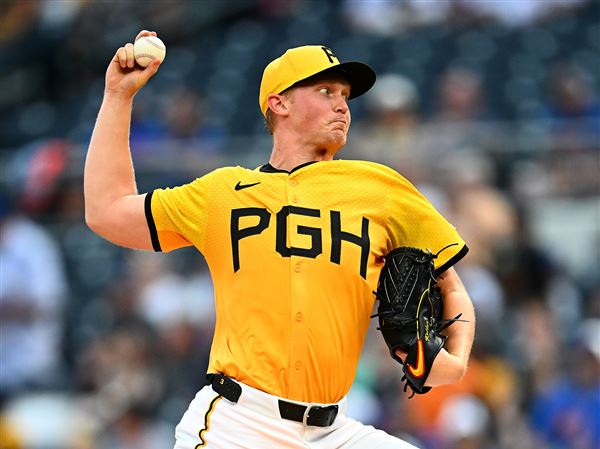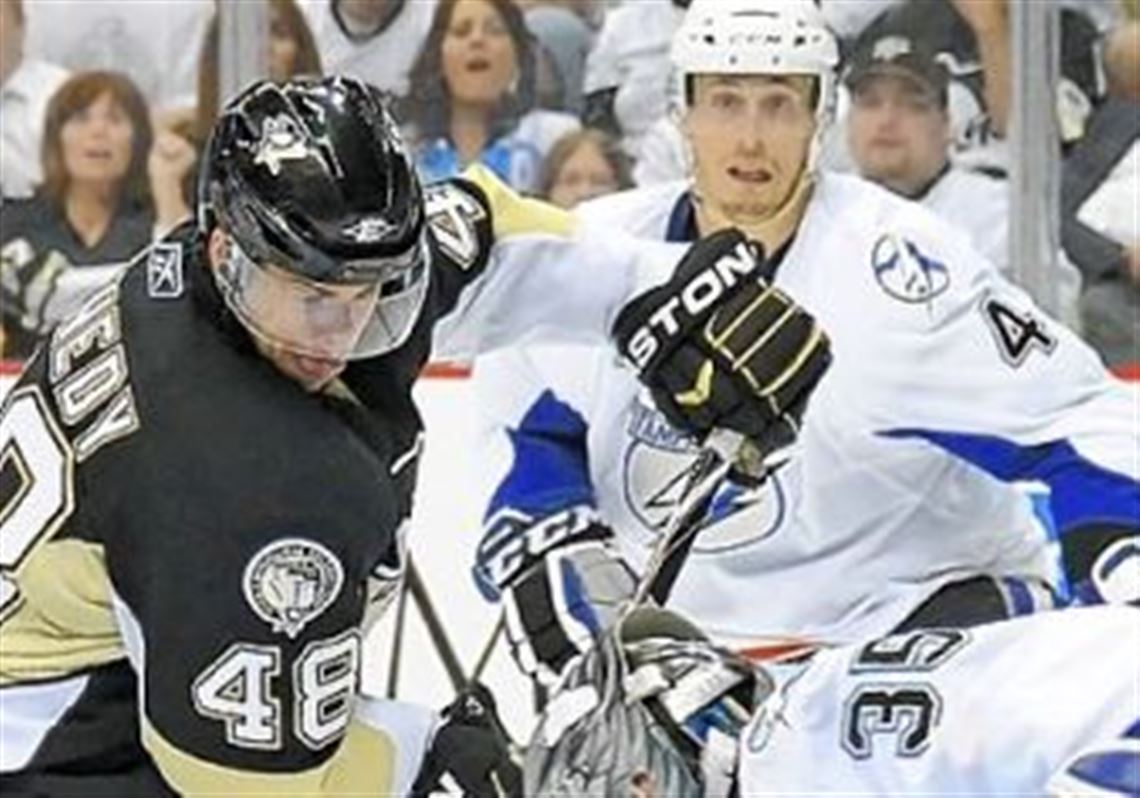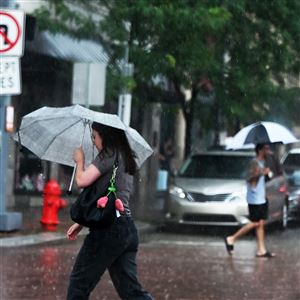Several statistics help to explain why Tampa Bay will face Washington in Game 1 of a second-round playoff series tonight, hours after the Penguins gather at Consol Energy Center for the final time.
Lightning goalie Dwayne Roloson's .949 save percentage in his team's opening-round matchup with the Penguins certainly had a lot to do with it. So did the Penguins going 34 for 35-- that's 34 failures -- on the power play.
But the most telling number might be this: Fourth-line winger Arron Asham led the Penguins with three goals. That is one more than they got from the No. 1 line of James Neal, Mark Letestu and Alex Kovalev and one fewer than the second line of Chris Kunitz, Jordan Staal and Tyler Kennedy produced.
The seven-game loss to the Lightning certainly seems to support the adage that in order for a team to succeed in high-stakes games, its best players must be its best players.
Part of the problem, of course, was that the Penguins' two most-skilled players, centers Sidney Crosby and Evgeni Malkin, spent the series in street clothes because of injuries.
There's no team in the league deep or balanced enough to absorb that kind of hit without feeling it, although the Penguins did a remarkable job of compensating for their absences during the final months of the regular season.
Many of the 106 points they earned, though, could be traced directly to excellent goaltending and team defense and a relentless work ethic. And, oh yeah, to the league's decision that every game must have a winner, even if it requires four-on-four overtime and a shootout to determine one.
The ability to win close, low-scoring games during the regular season reinforced the Penguins' belief that they could advance in the playoffs by manufacturing an occasional goal and stymieing the opponent's offense with stifling checking, aggressive shot-blocking and Marc-Andre Fleury's goaltending.
"We knew we weren't going to get a ton of goals," Kunitz said. "We had to play a 60-minute style of game and wear a team down, and we believed going into the playoffs that that was going to work."
Tampa Bay, though, got multiple-goal efforts from high-end talents like Martin St. Louis, Vincent Lecavalier, Steven Stamkos and Simon Gagne to complement timely contributions from blue-collar guys such as Sean Bergenheim, who scored the series-clinching goal in Tampa Bay's 1-0 victory in Game 7.
The Penguins, meanwhile, failed to get any of their 36 shots in the deciding game past Roloson, although he was not tested quite as severely as that total might suggest.
He was not tested for nearly the entire series because the Penguins were missing their two best offensive players and the guys they were hoping would take up some of the scoring slack -- Neal and Kovalev, in particular --weren't as productive as anticipated.
Neal scored on one of 20 shots, Kovalev on one of 16. And Kovalev so disappointed the coaching staff that he was stapled to the bench when the Penguins got a power play -- and, at least in theory, a final chance to save their season -- with 93 seconds left in Game 7.
Of course, they didn't score on that man-advantage and finished the series with 14 goals. That comes out to two per game, the second-lowest average among the 16 teams that took part in Round 1.
"Obviously, our offense wasn't there," Staal said after Game 7.
Even though Roloson played well and Tampa Bay's defensive work deep in its end was very good as the series wound down, the Penguins still managed to generate an average of 36.7 shots per game, second most of any team in the first round.
The disconnect between the large number of shots they got, and the small number that made it past Roloson, is hard to miss.
Creating scoring chances is important, but only if they lead to goals, and the Penguins did not get nearly enough, especially from their top-six forwards.
Asked about the inability to finish a reasonable percentage of their scoring opportunities, Asham shrugged slightly and said, "It's just the way it is."
Getting all those shots underscores that the Penguins gave an honest effort for most of the series, although their failure to match Tampa Bay's desperation in what became an 8-2 loss in Game 5 -- which the Penguins entered with a 3-1 lead and an opportunity to end the series at home -- could haunt them all summer.
"You can't waste opportunities to put teams away," Kunitz said.
Or, as the Penguins were reminded, opportunities to put pucks past their goaltender.
Post-Gazette Penguins beat writer Dave Molinari breaks down the matchups for the conference semifinals. Page D-2.
First Published: April 29, 2011, 8:30 a.m.

















